On a recent ride, a friend ended up getting a flat tire. We paused our ride so he could change his tube and pump it up, and then we were off again. Not long after, he got another flat. And after that…another. His frustration was evident when he blurted out, “why does my bike tire keep popping?!”
In this article, we’ll take a look at a few reasons your bike tire might be popping repeatedly. We’ll also give you a few tips on how to stop it from happening again.
Table of Contents
Why Your Bike Tire / Tube Keeps Popping RepeatedlyIf your bike tire or tube keeps popping repeatedly, you may be using the wrong tires or tire pressure for the terrain, your tires may be old and worn-out, you could have something sharp lodged in your tire or your rims could be damaged and are scratching the tire or tube on the inside.
8 Causes of Repeated Bike Tire / Tube Popping1.Using the wrong tires for the terrain is a good way to get repeated flats. Tires are designed specifically for different types of terrain: some are thinner and lighter to be more efficient on smooth ground, while others are thick and burly for handling rougher roads or trails.
If you’re riding gravel on a pair of skinny slicks, you’ll be more likely to get a puncture than if you used a good pair of gravel tires.
2. You’re Using the Wrong Tire PressureIf your tire pressure is too high or too low, it could cause repeated flats.
If your pressure is too low, you run the risk of getting a pinch flat. Pinch flats happen when the tube gets pinched between the rim and the road (two hard surfaces) and then ruptures. A pinch flat usually looks like a snakebite, with two small holes.
On the other hand, if your tire pressure is too high, you could blow the tube out, just like overinflating a balloon.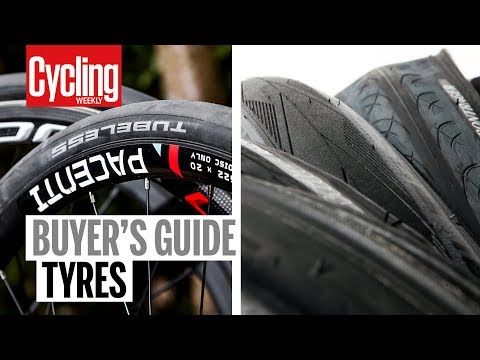 This is even more likely to happen if the tire isn’t evenly installed on the rim, or your bike takes a lot of hard impacts, like riding off curbs and drops, landing jumps or riding over rough terrain.
This is even more likely to happen if the tire isn’t evenly installed on the rim, or your bike takes a lot of hard impacts, like riding off curbs and drops, landing jumps or riding over rough terrain.
Old, worn tires are much more likely to get flats. As the rubber wears out, it offers less and less protection from damage. While (in most cases) a tire can still be used after being repaired from a puncture, it can only be repaired so many times before it’s time for a replacement. If you’re getting repeated flat tires, it could just be that you need to replace them with new ones.
4. You Have Something Sharp Stuck Inside Your TireIf you ran over something sharp, like a nail or piece of glass, it can cut through your tire and pop your tube. If you install a new tube without noticing the sharp object is lodged in your tire, the tube could pop all over again.
If your tire went flat after you just changed the tube, it could be because you damaged the tube when you installed it. For example, if the tube gets pinched as you are installing it, it could put a hole in the tube, causing the air to leak out slowly.
If you use tubeless tires but they aren’t seated on the rim correctly, they’ll leak. Even if you use tubed tires but don’t seat them correctly, the tube could get pinched between the tires and the rim, causing a flat.
If you hit a pothole and damage your rim, it could cause a sharp or jagged edge that could rip your tube. The rim may not appear to be damaged from the outside, but any sharp edge can easily cause repeated damage to every new tube you install.
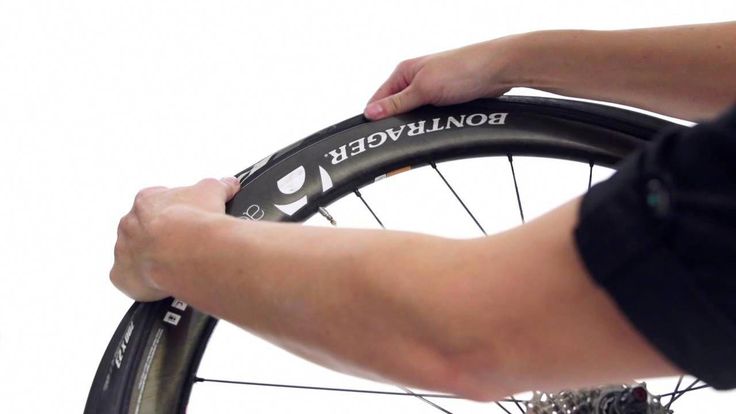 Your Tubes or Tires are Dry Rotted
Your Tubes or Tires are Dry RottedIf your bike has been sitting around in the garage for a long time, the tubes or tires could dry out and rot, the rubber becoming brittle and unusable. Even if you have tubes or tires in storage that have never been used, they could still suffer from dry rot.
These tires may not hold any air at all, or they may hold air but leak very slowly during your ride, leading to flats after a few hours of riding. Either way, tires that have become brittle as the rubber dries out are more prone to punctures and are not safe for use.
How to Stop Your Bike Tire / Tube from Popping (7 Tips)It’s a common mistake when you’re out on a ride. You changed a flat tire, but then you forgot to check for debris inside the tire. If a nail or piece of glass went all the way through the tire, it could still be stuck inside, causing the new tube to pop almost immediately.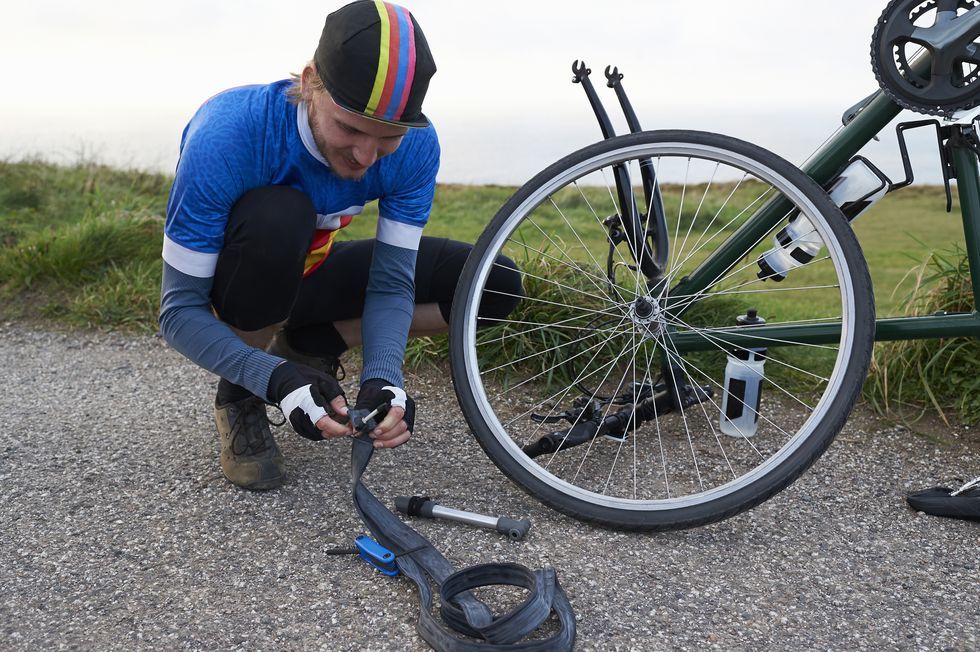
When you change a flat tire, inspect the inside of the tire carefully and remove any sharp debris before installing a new tube.
The sidewall of your bike tire will give you a minimum and maximum tire pressure for your specific tires. However, rider weight, tube type, terrain, and weather conditions will all play into how much pressure you should be using. The optimum tire pressure will give you a balance of speed, comfort, and traction. Check out this calculator to help you figure out your ideal tire pressure.
Replace your tires before they are worn out. You’ll want to get new tires every 2000 to 3000 miles, when the tread shows visible signs of severe wear, or when you’ve made numerous puncture repairs already…whichever comes first!
 Invest in Good Quality Tires for Your Riding Style and Terrain
Invest in Good Quality Tires for Your Riding Style and TerrainCheap tires will wear out sooner than good quality tires. So will tires not designed for your riding style or terrain. If you’re a heavier rider or like to ride aggressively on rough terrain, you’ll want to choose a more durable tire with a thicker sidewall. You may sacrifice some speed or weight, but you’ll save money when your tires don’t get as many flats.
So if you find yourself getting repeated flats on new tires, you may need to invest in something that’s a better fit for how and where you ride.
When you need to change a flat, you can partially inflate the tube before installing it. This will help reduce the risk of pinching it before it’s installed into the tire. It also makes it a lot easier to get the tube fitted and oriented correctly between the tire and rim.
If you live in an area where debris causes frequent punctures, you may want to invest in tire liners. Tire liners fit between the rubber wheel and the tube to prevent anything sharp from reaching the tube.
The downside to tire liners is that they can be heavy and hard to install, but they may solve your flat problem.
If the way you ride or the places you ride mean you get a lot of flats, you may want to make the switch to tubeless tires. Then, you won’t need to replace any tubes if you get a puncture. Instead, the liquid sealant inside the tire will seal the hole for you. Tubeless tires also let you run lower tire pressure, which will help prevent blowouts from over-pressurized tires.
If your tires and rims are compatible with tubeless technology, their benefits are well worth making the switch.
Bike tire popping is when the inner tube of a bike tire becomes deflated. This is due to the inner tube being punctured or cut. Most of the time, this happens when biking through a pothole, rock, or broken glass.
This is due to the inner tube being punctured or cut. Most of the time, this happens when biking through a pothole, rock, or broken glass.
The inner tube then starts to slowly leak air, which deflates the tire even more. If this continues for a long time, the tire can become completely deflated.
This is very dangerous because it will cause the rider to lose control of the bike and possibly fall. Cycling on a flat tire is dangerous because the tube can burst, causing the rider to lose control of the bike.
When popping occurs, it is necessary to repair the bike tire immediately. This can be done by using a patch or plug. One should not ride on a tire with a hole in it, as this can cause a serious accident.
There can be several reasons due to which a bike tire popped, some of them are discussed below. After reading this whole article you will be able to find out the reason why does my tire bike tire keeps popping? and what should be the solution to this problem?
Before even getting on your bike make sure you check the tire pressure of your bicycle tires. The recommended tire pressure for most road bikes is around 80-120 PSI (pounds per square inch). You can find this info in the owner’s manual or on the manufacturer’s website if you don’t have it available.
The recommended tire pressure for most road bikes is around 80-120 PSI (pounds per square inch). You can find this info in the owner’s manual or on the manufacturer’s website if you don’t have it available.
If your tires are low inflate them with either a hand pump, CO2 cartridge, or air compressor. Keep in mind that airing up your tires with a hand pump will take time and arm strength.
A quick way to inflate your tires is by using a CO2 cartridge inflator. This little device screws in between the tire and the inner tube. When you press down on the lever the cartridge shoots compressed gas into your tire which quickly fills it up.
An important thing to keep in mind when filling up your tire is that each time you add an additional 100 PSI, this adds 1 pound of weight to your bike (if measured at the wheel).
Every extra pound added to the wheel makes it harder for your bicycle to move forward so be mindful of how much pressure you put in your tires. If you like biking fast and far consider getting high-performance road bike tires.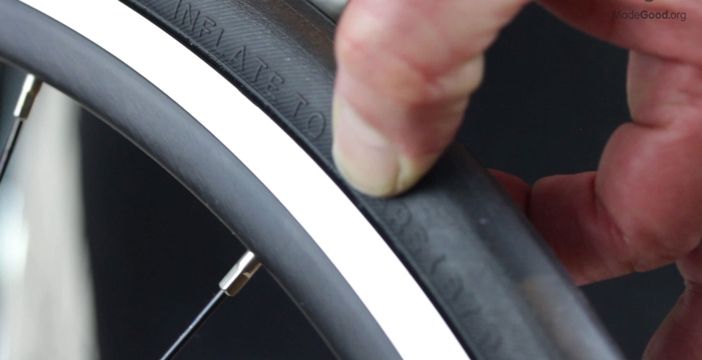 They are much lighter than other types of tires and will give you an advantage while biking.
They are much lighter than other types of tires and will give you an advantage while biking.
If you regularly check your tire pressure before every ride, the chances of getting a flat should be greatly reduced if not eliminated altogether.
Another cause of tire problems is rapid wear to the treads of your tires. If the grooves in between your tire’s tread get too low they can’t grip onto the ground which will cause flats (and accidents). The recommended distance between each groove is 1/32nd of an inch but this number varies depending on tire wear and manufacturer specifications. Be sure to regularly inspect your tread for any abnormal wear or unevenness because this could lead to a dangerous situation while riding.
Bicycle tires cost next to nothing so there is no reason why you should be using the same inflated tire for more than a year or two. If your bicycle tire becomes flat and won’t air up, check if it has any cuts in it. This can be caused by wearing out or from hitting rocks or other objects on the road/path that puncture your tire with an object as small as a nail.
It’s also important to pay attention to where you’re riding your bike, especially off the road biking. It’s fun but not much is going to save you if you suddenly hit a large rock at high speeds and pop a hole in your cheap, worn-out bicycle tire.
So check your tire pressure regularly for safety and to save yourself the frustration of having to fix a flat every couple of miles. But most importantly, spend the extra money on high-quality tires so you can get more life out of them for less cost in the long run.
If you have ever ridden a fixed-gear bicycle, chances are that at some point you will experience sudden tire blow-out on your rear wheel. This can be very dangerous if not done carefully.
There are two ways to prevent this from happening:
1.) Pumping the tire more often (probably best for commuters)
2.) Replacing your inner tube (best for racers)
If you aren’t willing to do either of these things or don’t want to spend money on inner tubes, then learn how to fix flat tires. I recommend becoming proficient in fixing flat tires while riding before you actually pop one.
I recommend becoming proficient in fixing flat tires while riding before you actually pop one.
Although it is hard NOT to stop when you get a flat… try and get used to changing flats quickly so that they won’t catch you off guard.
A few weeks ago I bought a brand new, fancy road bike. Now it seems like every day I’m having to stop by the side of the road to fix yet another flat tire. And when I look carefully at the tires, they seem smooth and round. So why keep getting flats?
There are two reasons you’re getting a lot of flats:
First, because your tires are under-inflated.
Second, because there is something sharp embedded in one or both of your tires that are making a tiny hole every time you roll down the road.
In an article from About.com, Sheldon Brown explains how correctly inflating your tires will significantly reduce your chances of getting a flat tire.
“Most bike tires lose pressure every day, just sitting there. The rate at which they leak depends on the air pressure inside them and the size of the hole in the tire casing through which the air is leaking.
The rate at which they leak depends on the air pressure inside them and the size of the hole in the tire casing through which the air is leaking.
Since it is impossible to eliminate all holes, tire makers attempt to design their tires so that when properly inflated they will not leak enough air to cause a significant loss of riding performance during a normal period of daily use.”
According to Brown, even though under-inflated tires are more likely to get punctured, over-inflation can also make your ride uncomfortable because you’ll be using up energy flexing your wheels against road resistance (which is caused by friction between your bicycle’s tires and the road).
But if you think that over-inflating your tires will help prevent flat tires, you’re wrong. If anything, it’s more likely to cause one because of the added stress placed on the tire casing.
“Over-inflation can contribute to tire failures by causing additional flexing of the sidewalls when cornering or accelerating/braking hard, and extra strain on joints between beads and sidewalls.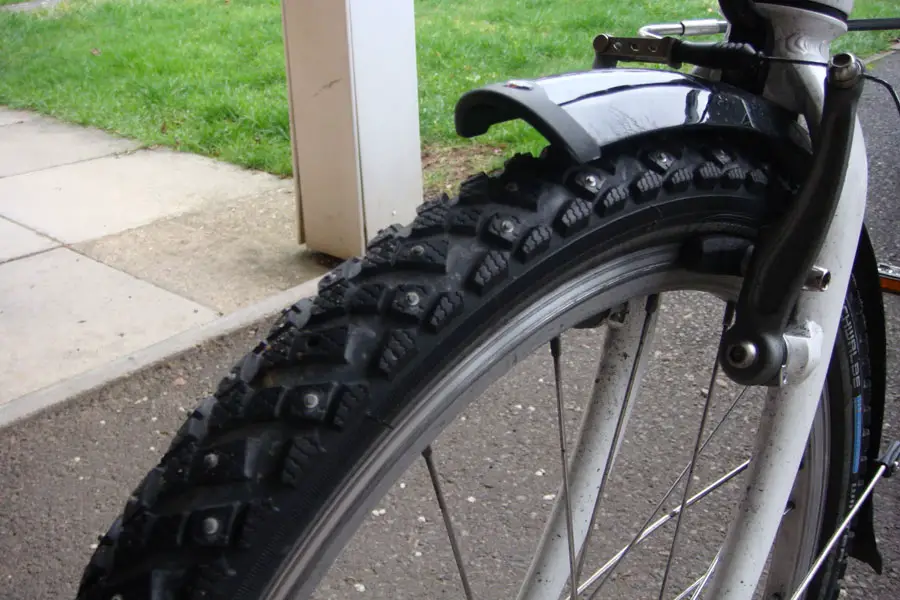 ”
”
So how do you keep getting flats despite maintaining proper air pressure? Unfortunately, it does not just puncture that is responsible for most frequent flats. There is another reason why bike riders get a lot of flats: sharp objects embedded in their bike tire treads.
1. Inner tubes are made of rubber, which is a natural material that can be susceptible to the environment
2. Heat and cold exposure can cause inner tubes to crack or burst
3. Overinflation of an inner tube will also lead to burst seams
4. If you don’t store your inner tube in a cool, dry place it may develop mold and bacteria growth over time
5. Take care when inflating your inner tube – too much air pressure will make it more likely for the seams to break or tear open
6. Punctures from sharp objects like rocks and sticks can also cause an explosion if they go through the outer layer of rubber into the bladder inside.
1. Tires are made of rubber and can deteriorate over time
Tires are made of rubber and can deteriorate over time
2. A tire blowout is usually caused by a nail puncturing the tire, which happens more often in rural areas than urban ones
3. Driving on a flat or under-inflated tire will cause it to wear down faster, so check your tires regularly
4. Check for any leaking fluid around the rim of the wheel – if you see any, get your car checked out immediately
5. If you’re driving at high speeds when you have a blowout, be sure to take evasive action as soon as possible to avoid crashing into something else
6. Always carry spare tires with you in case one blows out unexpectedly
1. Check the air pressure in your tires and make sure they are inflated to the correct amount
2. Make sure you have enough tire tread for traction on pavement
3. Take a look at your bike’s alignment – if it is off, this could be causing pinch flats
4. Check that there aren’t any objects stuck between your tire and wheel rim
5.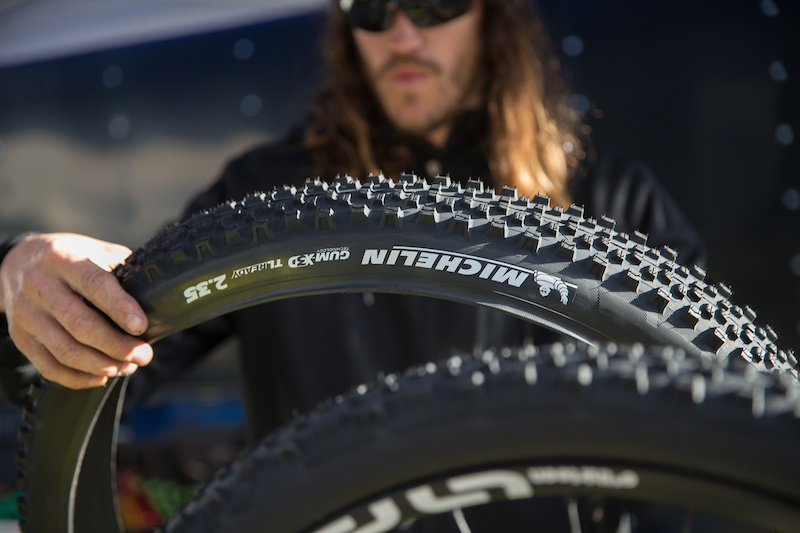 Inspect your rims for damage or cracks that might cause problems with the tube inside of them
Inspect your rims for damage or cracks that might cause problems with the tube inside of them
6. Replace worn out tubes and tires as needed to avoid future flat tires
1. Make sure your tires are inflated to the right pressure
2. Check that there is no air leaking from any of the tubes or valve stems
3. Check that you have enough air in your tire for it to be ridden without popping
4. Clean out dirt and debris from inside your tire, including around the rim where it meets the tube
5. Replace worn-out tires with new ones – this will help prevent them from popping because they’ll be more pliable than old tires
6. If you’re riding on rough terrain or over potholes, try putting less weight on one side so that it won’t pop as often when hitting bumps
1. Road bike tires are inflated to different pressures depending on the rider’s weight and type of terrain
2. The most common pressure is 120 psi, but it can be as low as 80 or as high as 160
The most common pressure is 120 psi, but it can be as low as 80 or as high as 160
3. You should inflate your road bike tires so that they feel supple and not squishy
4. Avoid over-inflating your tires because this will cause them to wear out faster
5. Over-inflating also causes a lot of rolling resistance which makes pedaling more difficult
6. Under-inflated tires will make you feel like you’re riding in sand and can lead to punctures
Bicycle tire wear is a natural thing and it always happens. In general, you need to keep in mind that a bicycle tire is a consumable item.
Wear itself is different and carries different risks when driving.
Tread wear. Leads to an increase in the likelihood of punctures, loss of traction and ground. For a “toothy” tire, this is generally death.
Deep and wide cuts, abrasions and breaks in will not hold an inflated tube inside, and it can burst at any moment, all the more so you should always remember that the pressure is not held by the tube, but by the tire.
Small cracks in rubber are not as bad as deep and multiple cracks that can lead to gusts.
One of the serious and objective factors of bicycle tire wear is the cyclist's weight.
The rule here is simple: the greater the weight of the cyclist, the faster the tires wear out, especially the rear wheel. Tires on a bicycle on a 100 kg man will wear out faster than on a slender girl weighing 50 kg.
Cycling experts believe that starting with a load of more than 75-80 kg, tire wear becomes more noticeable.
Again, given the weight distribution of the cyclist on the wheels, the rear tires are subject to more wear.
First of all, what is a compound?
Compound in tires is the compound of rubber from which the tread is made.
What affects the stiffness of the compound.
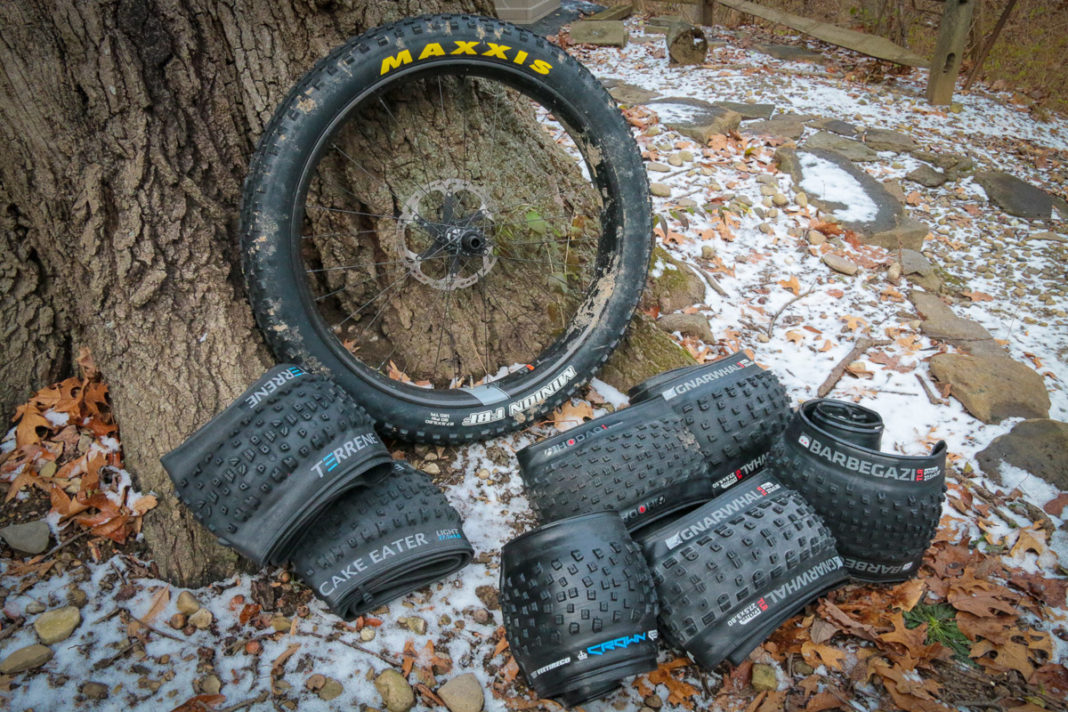
One of the properties of compounds is hardness or stiffness.
Designated on tires with a two-digit number with the letter "a" at the end. For example: 40a, 42a, 57a/62a, 60a, 62a, 70a, 80a. The larger the number, the stiffer the tire.
Depending on the composition of the compound, the properties of the tire differ. For example, a "sticky slick" with a hardness of 40a or 42a will ride on smooth asphalt even worse than a "toothy" rubber with a hardness of 70a.
Manufacturers use a huge variety of rubber types in their production, but the general idea is the same: the softer the compound, the better the grip, but the higher the wear rate .
You can read more about the compound and stiffness of tires on our website in the article “What is the compound and stiffness of bicycle tires”.
Each type of tire is designed for its own operating conditions. Therefore, if you drive on asphalt on toothy rubber designed for driving through the forest, then its wear will be very fast.
Therefore, if you drive on asphalt on toothy rubber designed for driving through the forest, then its wear will be very fast.
Some young cyclists buy a brand new mountain bike with toothy tires and ride it on the city pavement. Ponty, of course, is a great force, but for asphalt you need to take slicks or semi-slicks. And on toothy ones - ride on the ground, sand, snow, etc.
For more information about the types and choice of tires, see the article “Which tire to choose for a bike”.
Continuously riding with low tire pressure will cause premature tire wear. In this case, the destruction of the side wall of the tire and excessive wear of the tread occurs.
More information about tire pressure can be found in the article “Bicycle tire pressure”.
When braking hard and hard, especially on asphalt or concrete, the tread wears out a lot, especially on soft rubber.

Bicycle storage under the following conditions:
lead to a change in the properties of the rubber or compound from which the tire is made and its accelerated wear.
The tire loses its softness, cracks and quickly becomes unusable.
For more information about the rules for storing a bike in winter and between skiing, see the article “Where and how to store a bike in winter”.
Based on the listed causes of tire wear, methods to combat this phenomenon are also selected.
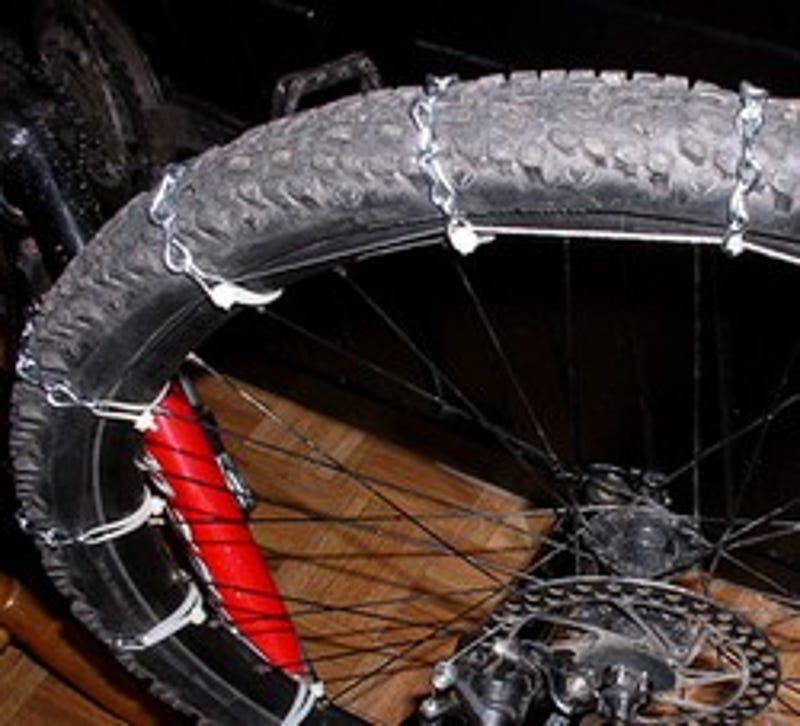
How to put the last 20-30 cm of a stubborn tire on a bicycle wheel is described here.
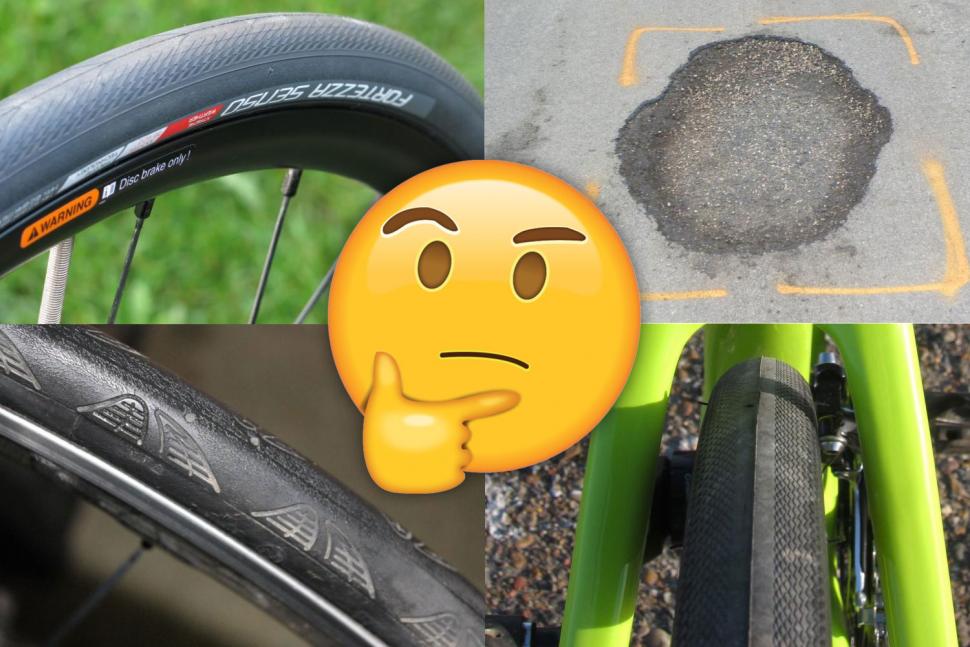
Since the rear wheel wears faster than the front, swapping them will prolong the life of the entire set of tires.
In general, approach this issue with sober calculation and logic.
Often, if you need to change one tire, no matter front or rear, the question arises: “ Is it possible to put different tires on the front and rear wheels on a bicycle? With different tread? »
Yes, you can, especially since it is not always possible to buy exactly the same rubber that was on the bike earlier.
More details about this are described in the article "Is it possible to put different tires on different wheels of a bicycle and how to choose them?".
In conclusion, I would like to say - watch for wear by inspecting the wheels from time to time between rides.
It is impossible to say exactly how many kilometers you will have enough rubber installed on the wheels. As you already understood, wear depends on so many factors, but remember that it is dangerous to ride on heavily worn tires.
inexperienced native 13.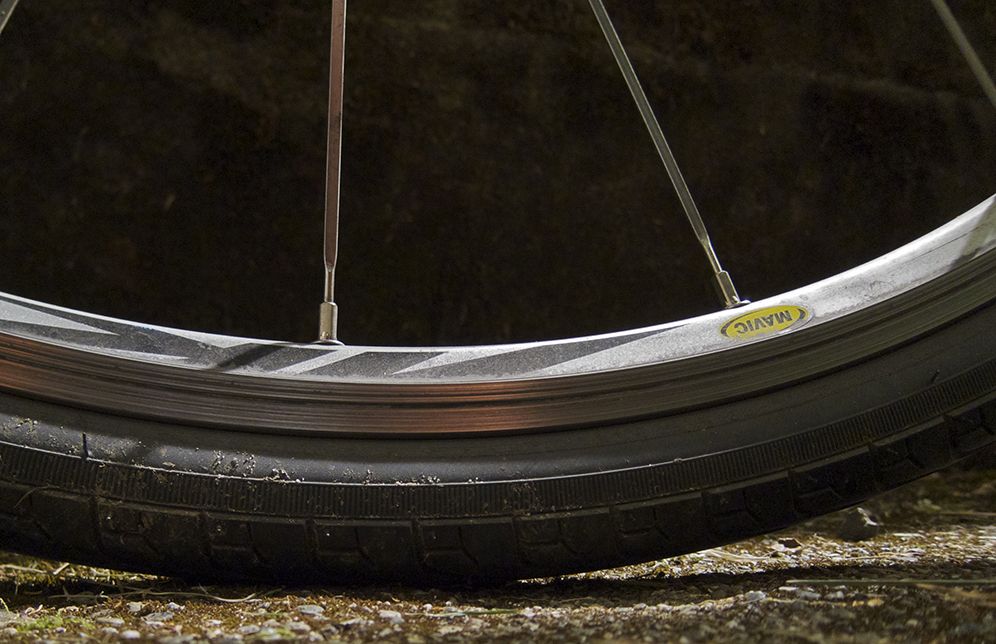 07.09 10:49
07.09 10:49
13.07.09 10:49
On a children's bike, a tire burst almost along the entire contour. Why could this happen, and what to do now, where to get a new one, and how much will it cost approximately?
Attached files
Nothing helps with housework like a disconnected internet
#1
inexperienced native 13.07.09 10:52
New 07/13/09 10:52
In response on 07/13/09 10:49
More photo
attached files
Nothing helps the household as disabled Internet
#2
Patriot 13.07. 09 10:56NEW 13.07.09 10:56
inexperienced in reply 13.07.09 10:49
0239 4. fatigue of the material
5. exposure to weather (cold, heat) + age of the material
exposure to weather (cold, heat) + age of the material
take a new one in a lisiped shop... remove the old one, show it to you and they will offer you a new one... the cost depends on the size and quality of the material... plus mounting ... or will you mount it yourself?
miner minung find...
#3
Alex Kazak old-timer 13.07.09 10:58
NEW 07/13/09 10:58
inexperienced in reply 07/13/09 10:49
Rewrite the label (visible in the top photo) and look for the same in bicycle shops, supermarkets like Real, Kaufland, or stores where children's goods are sold ( and big too).
#4
inexperienced indigenous 07/13/09 11:12
NEW 07/13/09 11:12
in reply Pikul 07/13/09 10:56
It's not clear to me: the bike was bought 7 months ago new on Amazon.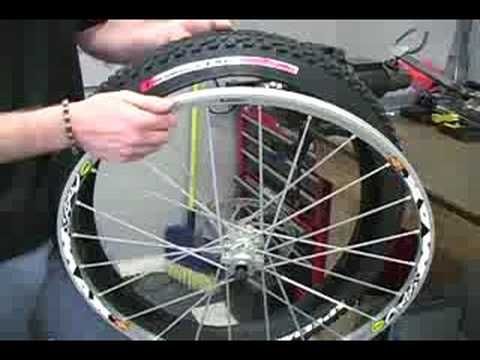 It almost did not go, especially in the winter did not go at all. So he was already bad? And one more thing: he is not deflated. The inner chamber is intact. It was the tire that blew. Is it possible to replace only it, or do I need to change the inner chamber too?
It almost did not go, especially in the winter did not go at all. So he was already bad? And one more thing: he is not deflated. The inner chamber is intact. It was the tire that blew. Is it possible to replace only it, or do I need to change the inner chamber too?
Nothing helps with housework like a disconnected internet
#5
inexperienced native 07/13/09 11:13
NEW 07/13/09 11:13
in reply to Alex Kazak 07/13/09 10:58
Thank you.
Nothing helps with the housework like a disconnected internet
#6
K.A.P native 07/13/09 11:18
NEW 07/13/09 11:18
inexperienced in response 07/13/09 11:12
The inner chamber does not need to be changed, only the tire.
if you have the ability to disassemble the wheel and remove the tire yourself, then take it off without any problems and look for it in any supermarkets or even in a baumarkt
if you can’t do it yourself, take the lisaped to a bike shop (they usually have their own workshops) and hand it in for repair, they will do everything and adjust everything.
#7
inexperienced native 07/13/09 11:20
NEW 13.07.09 11:20
in reply to K.A.P 13.07.09 11:18
In reply to:
Nothing helps with housework like a disconnected internet
#8
K.A.P native 07/13/09 11:24
NEW 13.07.09 11:24
inexperienced in reply 13.07.09 11:12
I don't understand... yard?
-summer!
- Well, look carefully, the trees are bare, so what time of year?
-summer!
- Well, people walk around in fur coats and felt boots, what's in the yard?
- summer!
- yes, what ... spruces-fires ... summer ??? icicles hanging on the roof!! what is this summer??
-but such a shitty summer.
is the same with your tire, more precisely with a tire, what a shitty tire!
#9
K.A.P Indigenous 7/13/09 11:27 AM
NEW 07/13/09 11:27
inexperienced in response 07/13/09 11:20
two keys and hands from there
lisaped is not a 50-speed one? well, so that there is no mechanism with 20 stars on the rear wheel ... it's easy to spin everything, but then set everything up ...
if there is one asterisk, then there is nothing to do there: unscrew the wheel, rear brake, lower the camera, remove the tire and go for a new one
#10
Pikul patriot NEW 07/13/09 11:38
in response to inexperienced 07/13/09 11:12
In response to:
must have been flat... because, in the first photo, you can see that the chamber is scrolled.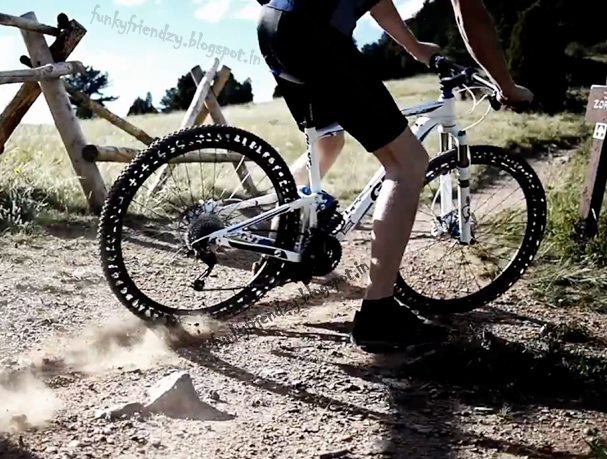 .. the valve is tilted... the chamber is not in its place... only the tire needs to be replaced...
.. the valve is tilted... the chamber is not in its place... only the tire needs to be replaced...
miner minung find...
#11
inexperienced native 13.07.09 11:38
NEW 07/13/09 11:38
in reply to K.A.P 07/13/09 11:27
This is a small children's bicycle without speeds. Last question: How to lower the camera? There is also a valve that prevents this.
Nothing helps with the housework like a disconnected Internet0200 NEW 07/13/09 11:44
inexperienced in reply 07/13/09 11:38
The pin sticks out inside the valve, press it with a screwdriver, and the air will hiss.
#13
plus13 old-timer 07/13/09 11:50
NEW 07/13/09 11:50
in reply to Alex Kazak 07/13/09 11:44
there are others, you need to pull out the spool, well, those with a rubber nipple
#14
Alex Kazak 113.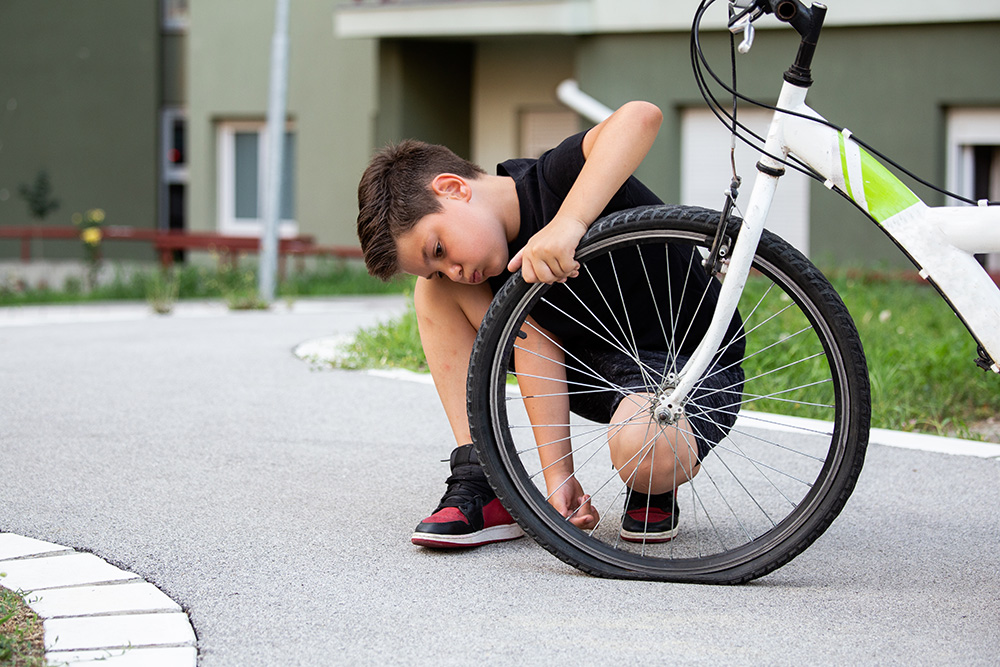 old-timer :52
old-timer :52
NEW 13.07.0911:52
in reply to plus13 07/13/09 11:50
The photo does not seem to be nipple.
But the principle is the same: blow there - buoy from there
#15
inexperienced native 13.07.09 12:07
NEW 07/13/09 12:07
in reply to Alex Kazak 07/13/09 11:52
Unscrewed the wheel. And how now to rip off the tire from it? She doesn't move her hands. Can you pry it off with a screwdriver?
Nothing helps with housework like a disconnected internet
#16
Alex Kazak old-timer 7/13/09 12:15
NEW 13.07.09 12:15
inexperienced 13.07.09 12:07
Two screwdrivers, but be careful not to pierce the camera. You hook the tire with one and twist it as much as possible. You hold the first one in an inverted position, and next to it you hook it with a second screwdriver and turn it out. It should be easier to go further.
You hook the tire with one and twist it as much as possible. You hold the first one in an inverted position, and next to it you hook it with a second screwdriver and turn it out. It should be easier to go further.
#17
inexperienced native 07/13/09 12:23
NEW 07/13/09 12:23
in reply to Alex Kazak 07/13/09 12:15
There is such a hard metal wire inside the tire. Is this part of a tire? Should she withdraw too, or should she stay?
Nothing helps with housework like a disconnected internet NEW 07/13/09 12:36
inexperienced 07/13/09 12:23
I don't know this. Where, in the ragged?
By the way, he didn't tell. You disassemble one side of the tire, pull out the chamber, and then you remove the tire completely.
#19
inexperienced native 07/13/09 12:57
NEW 07/13/09 12:57
in reply to Alex Kazak 07/13/09 12:36
Yes, there are 2 wire rings in the tire.